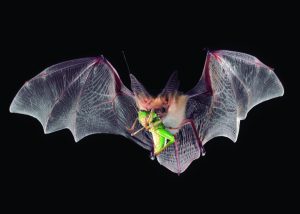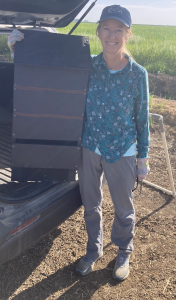Bats will soon be migrating back to Northern California from their overwintering sites from as far away as Mexico. Others will be waking up from a long winter’s sleep, after hibernating in caves.
We have 26 species of bats in our state and most all are insectivorous. Their voracious appetite for bugs make them superb predators of insect pests. Farmers and garden enthusiasts who want their help in controlling pests are putting up boxes to attract colonies of bats. The secret to success is to put the bat boxes on the side of a building, at least ten feed high, where it gets morning sun and afternoon shade to ensure occupancy.
Bats are some of the most interesting mammals; contrary to popular belief, bats are not blind, they do not get tangled in your hair, they’re not flying rats, and they’re not aggressive. Instead they echolocate to see in the dark, they’re very shy and cute, and they live for over 30 years. While bats can carry rabies, this disease is preventable. Never pick up a bat with bare hands, as they’ll bite in self-defense, and always vaccinate your pets.
Some of the threats to bats include wind turbines and white-nose syndrome, a fungal disease that attacks bats.
Rachael Long, Farm Advisor with the UC Cooperative Extension Service in the Sacramento Valley, has been studying bats and their impacts on pest control in crops for nearly 25-years. She is a graduate of UC Berkeley and UC Davis. She lives on a farm and is the author of The Black Rock Desert Trilogy, a children’s chapter book series that brings kids into a world of bats in a highly adventurous way. Join her for an engaging evening to learn more about the natural history of bats in our state.






